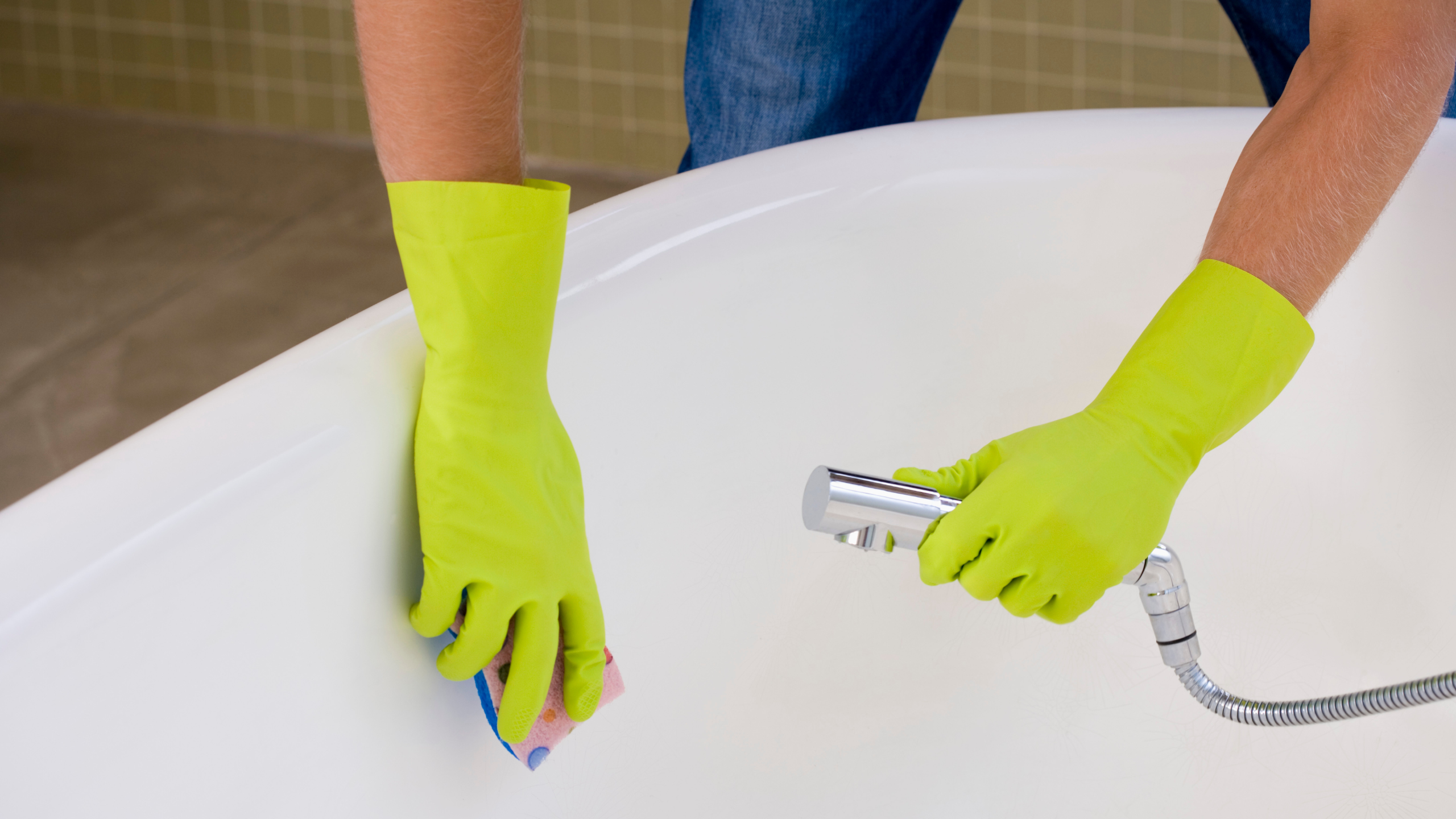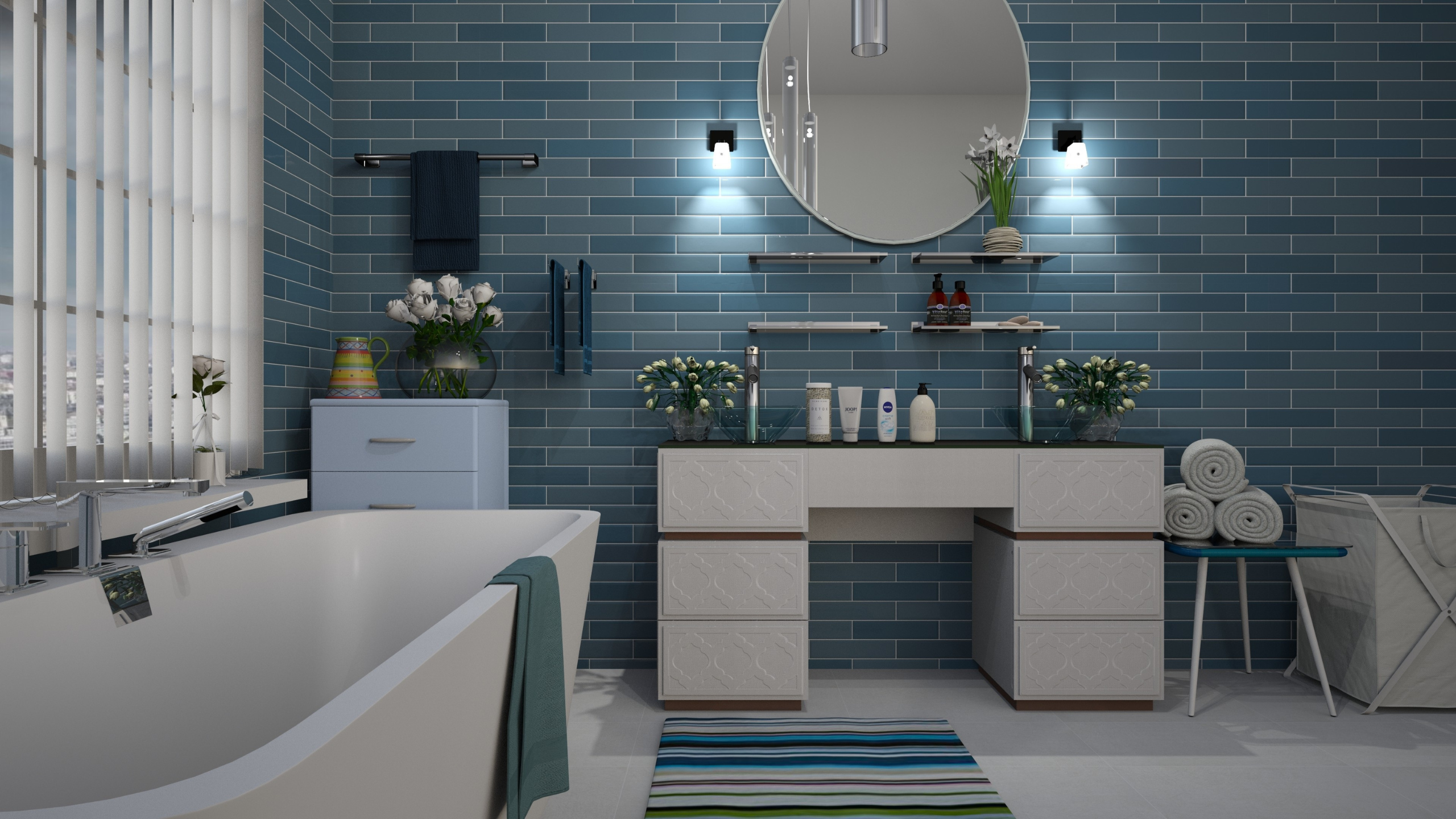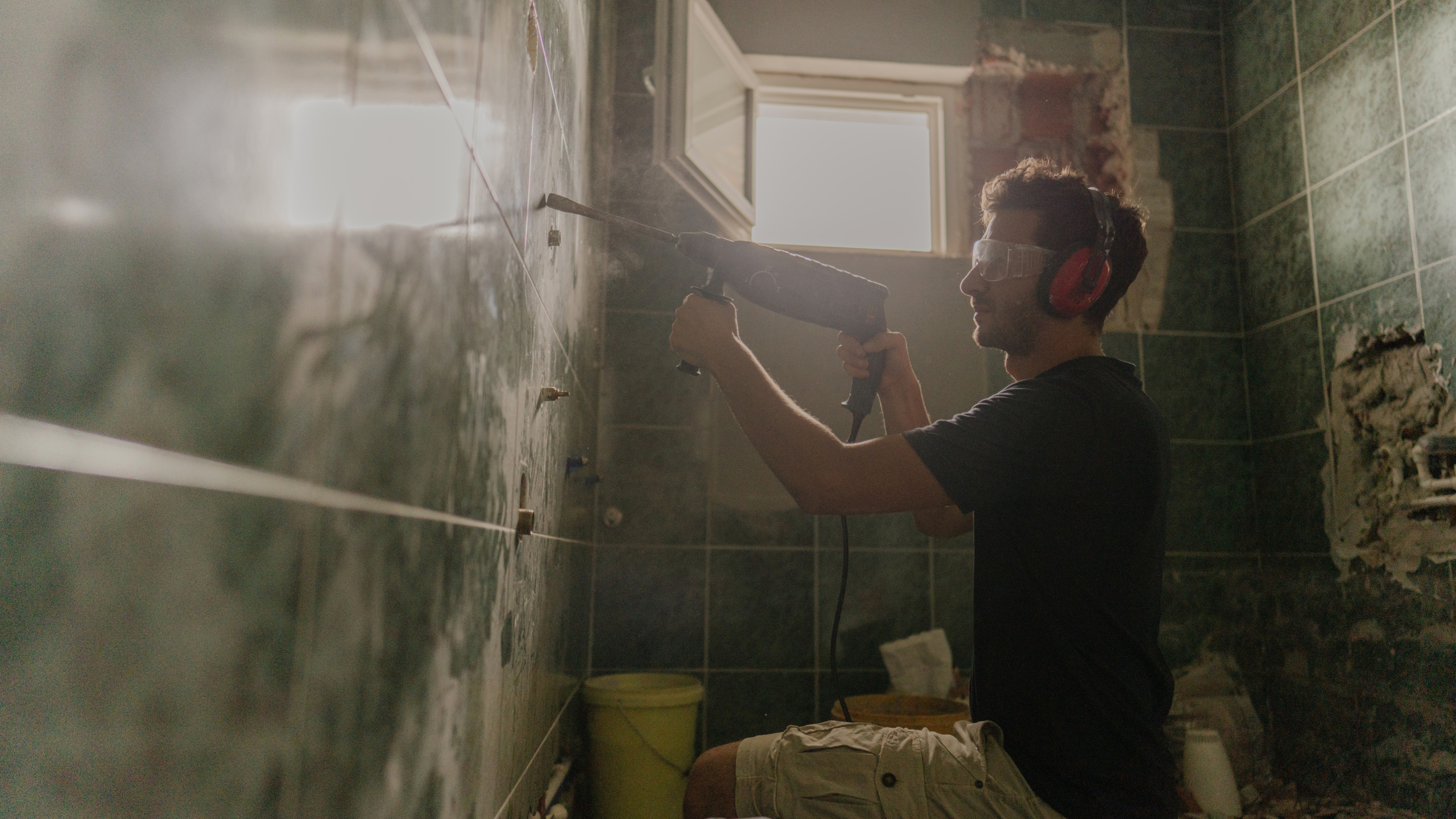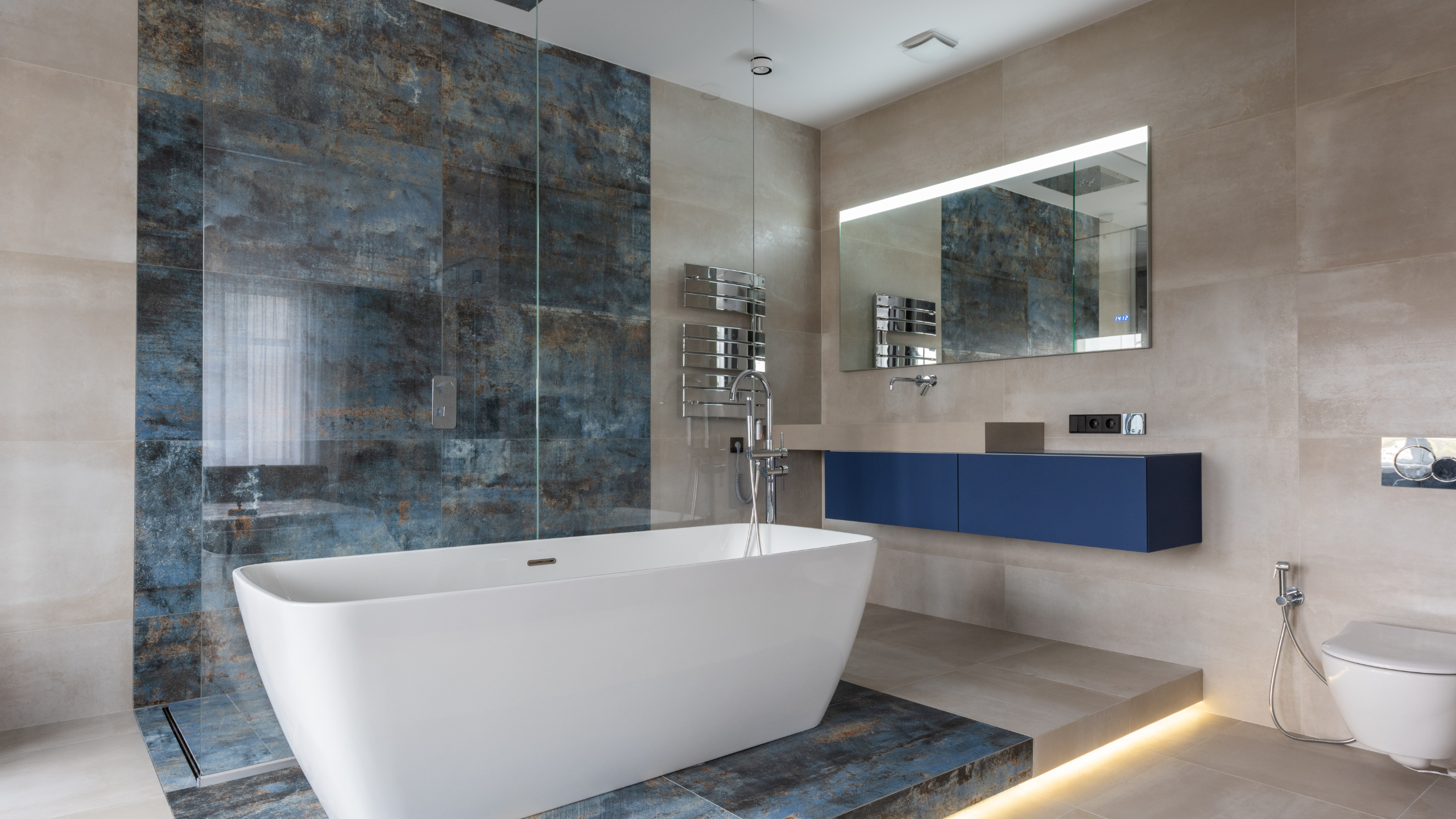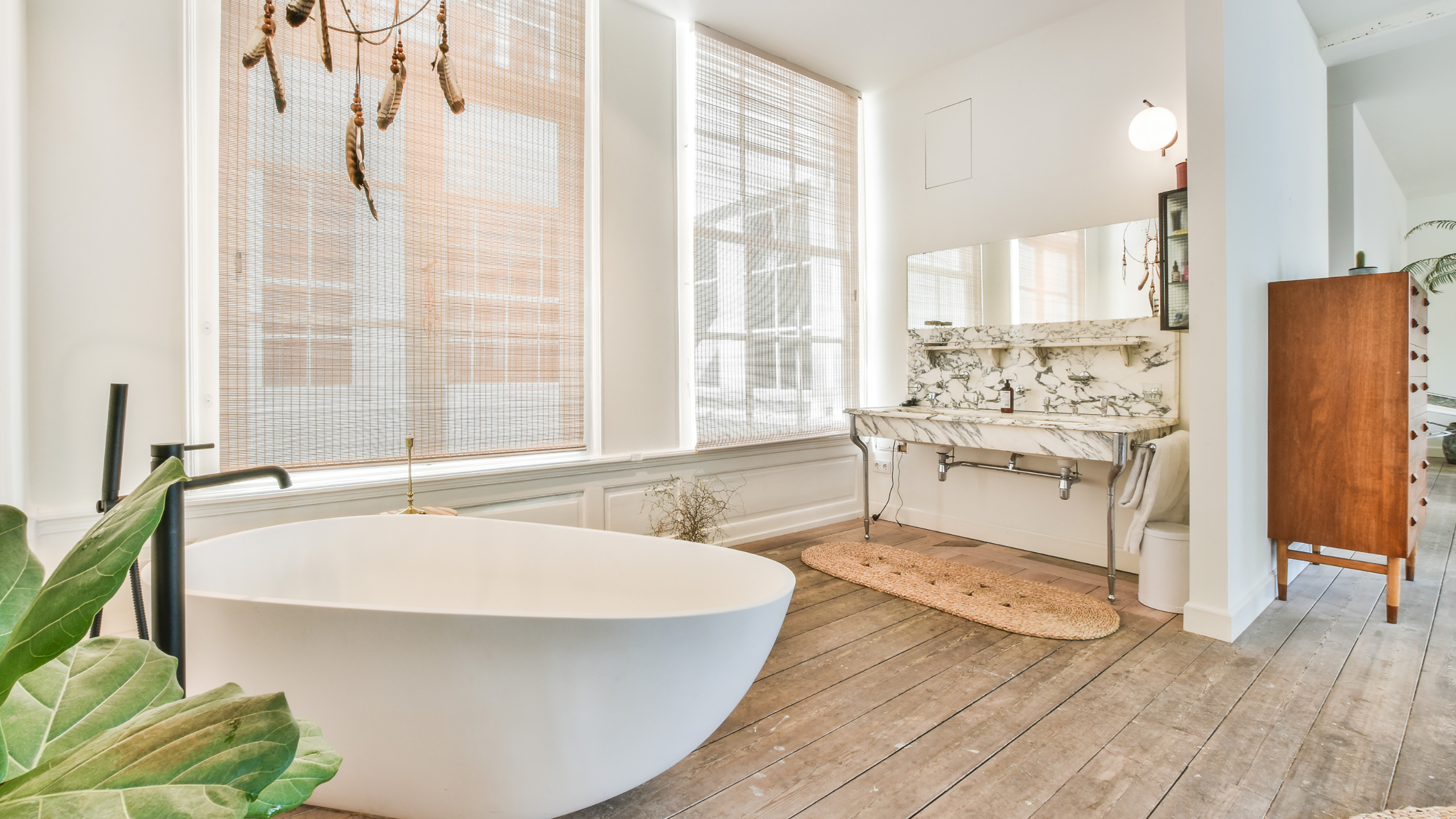You have two options when you’re “blessed” with a 1950s-style bathroom with pastel tiles (peach? teal? faded yellow?). Either accept it or redo the space. However, reglazing tile, tubs, and sinks has just come to our attention as a third alternative that can be nearly as dramatic as a total remodel but without the time and expense.
Perhaps you are familiar with it under a different label: Depending on who you ask, reglazing can be called resurfacing, refinishing, or even painting (though the latter is inaccurate). However, the method remains the same: After a thorough cleaning, a professional can come to your house and spray a thin, opaque, shiny coat of enamel over the tile, sink, tub, or all of the above, completely altering the space in a short amount of time.
Whether as a temporary fix or the final solution, reglazing can help you save money. And it’s not too complicated of a procedure: In order to ensure that the enamel adheres to the tiles being reglazed, professionals will acid-etch them to remove the shine and then clean the surface with chemicals to eliminate any remaining oil and grease. The tiles will need to be cleaned and lightly sanded before the paint can be applied again. Three or four coats of high-gloss enamel will then be sprayed onto the surfaces. You can’t accommodate the demand for a matte surface since your tiles would quickly become stained if they were made absorbent.
You may have hesitated because the new liquid enamel coating is applied through spray, but rest assured, this is the most effective method for achieving a flawless sheen. This means that the grout and the tile will be the same color because they are both enameled over (the enamel is just a few millimeters thick, so the grooves won’t be filled in). A reglazing job can be completed in a day, but you must wait at least 12 hours before using the bathroom again if it was just reglazed. Then, without further ado, your grandmother’s bathtub will be history.



